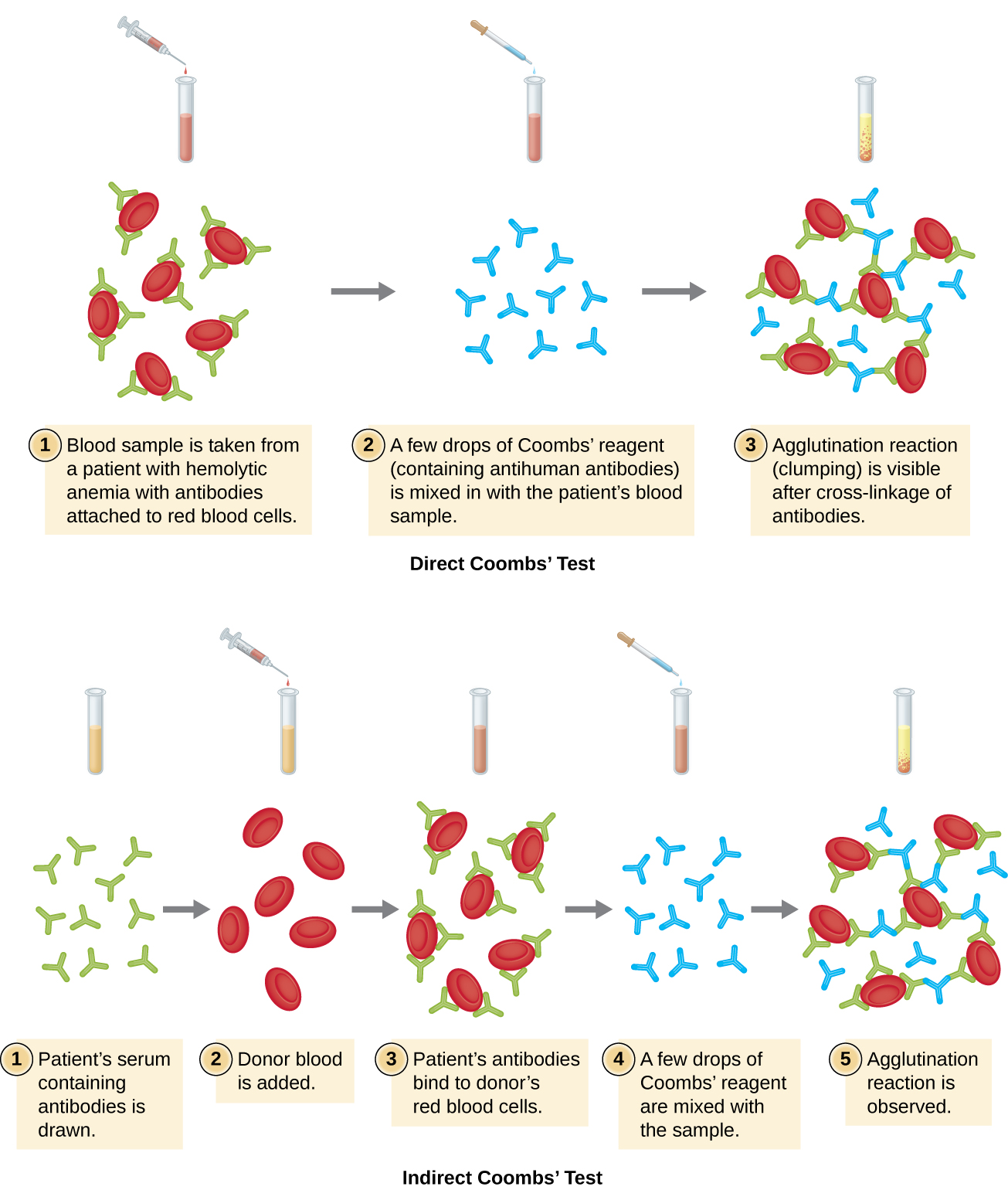| << Chapter < Page | Chapter >> Page > |
Agglutination of red blood cells is called hemagglutination . One common assay that uses hemagglutination is the direct Coombs’ test , also called the direct antihuman globulin test (DAT) , which generally looks for nonagglutinating antibodies. The test can also detect complement attached to red blood cells.
The Coombs’ test is often employed when a newborn has jaundice , yellowing of the skin caused by high blood concentrations of bilirubin, a product of the breakdown of hemoglobin in the blood. The Coombs’ test is used to determine whether the child’s red blood cells have been bound by the mother’s antibodies. These antibodies would activate complement, leading to red blood cell lysis and the subsequent jaundice. Other conditions that can cause positive direct Coombs’ tests include hemolytic transfusion reactions , autoimmune hemolytic anemia , infectious mononucleosis (caused by Epstein-Barr virus ), syphilis , and Mycoplasma pneumonia . A positive direct Coombs’ test may also be seen in some cancers and as an allergic reaction to some drugs (e.g., penicillin).
The antibodies bound to red blood cells in these conditions are most often IgG , and because of the orientation of the antigen-binding sites on IgG and the comparatively large size of a red blood cell, it is unlikely that any visible agglutination will occur. However, the presence of IgG bound to red blood cells can be detected by adding Coombs’ reagent , an antiserum containing antihuman IgG antibodies (that may be combined with anti-complement) ( [link] ). The Coombs’ reagent links the IgG attached to neighboring red blood cells and thus promotes agglutination.
There is also an indirect Coombs’ test known as the indirect antiglobulin test (IAT) . This screens an individual for antibodies against red blood cell antigens (other than the A and B antigens) that are unbound in a patient’s serum ( [link] ). IAT can be used to screen pregnant women for antibodies that may cause hemolytic disease of the newborn . It can also be used prior to giving blood transfusions. More detail on how the IAT is performed is discussed below.

Antibodies that bind to red blood cells are not the only cause of hemagglutination. Some viruses also bind to red blood cells, and this binding can cause agglutination when the viruses cross-link the red blood cells. For example, influenza viruses have two different types of viral spikes called neuraminidase (N) and hemagglutinin (H), the latter named for its ability to agglutinate red blood cells (see Viruses ). Thus, we can use red blood cells to detect the presence of influenza virus by direct hemagglutination assays (HA), in which the virus causes visible agglutination of red blood cells. The mumps and rubella viruses can also be detected using HA.

Notification Switch
Would you like to follow the 'Microbiology' conversation and receive update notifications?